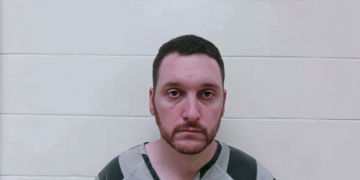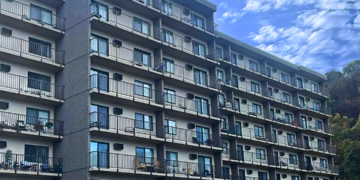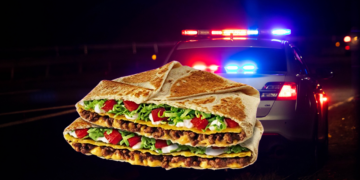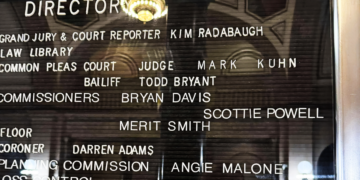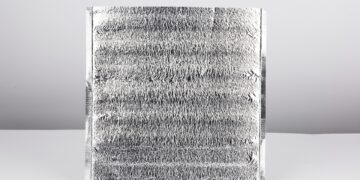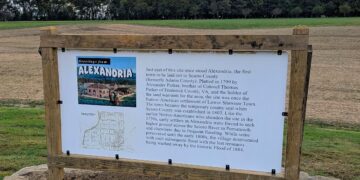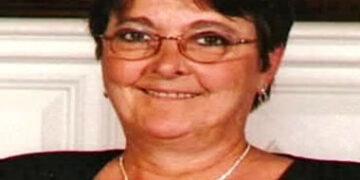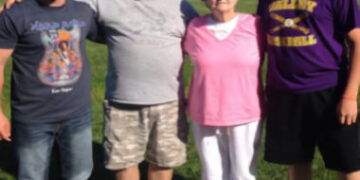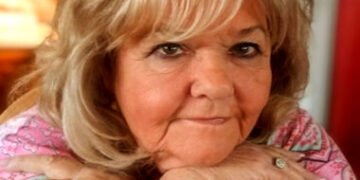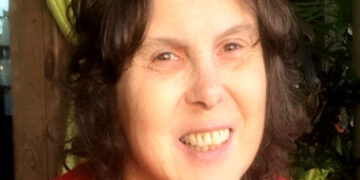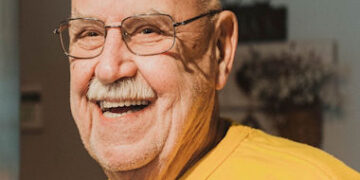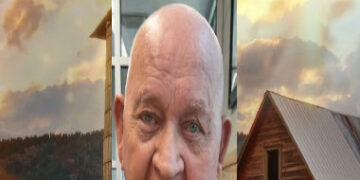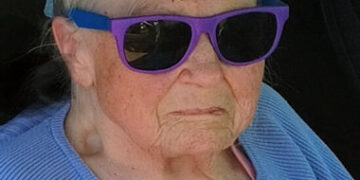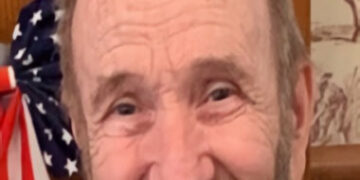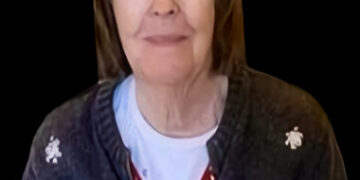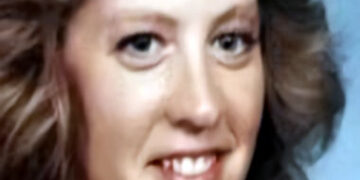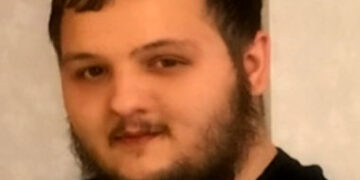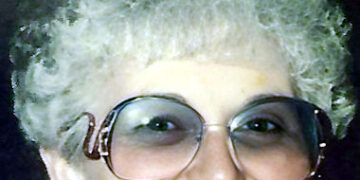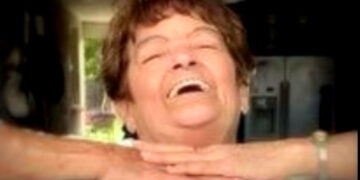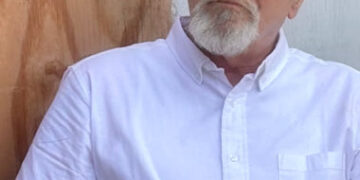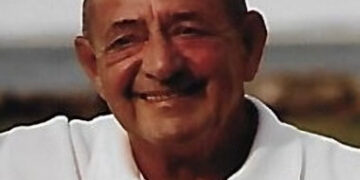SCDN has obtained the full autopsy report for Kevin Bailey. Bailey died on June 1 after sustaining injuring while incarcerated at the Scioto County Jail. Franklin County Deputy Coroner Maneesha Pandey determined the cause of death was a homicide due to blunt force trauma to the head, neck, and torso.
The reports details multiple skull fractures, broken ribs, and bruises to Bailey’s lungs. Though Bailey died on June 1, the report was not listed as complete until September 1, more than a month after Bailey’s ashes were released to his sister, Karen Skaggs. Skaggs only just received a copy of the findings.
When I spoke to Scioto County Prosecutor Shane Tieman last month about the investigation, he said his office was still waiting for the final report from the state.
Kevin Bailey Autopsy report
Postmortem Examination Report
Kevin Bailey, Male, 56 Years
June 1, 2020 @ 2251 hours
June 7, 2020 @ 0823 hours
Maneesha Pandey, M.D. Forensic Pathologist
LAB-20-2315
Date of Birth: January 18, 1964
Examination Type: Autopsy
FINDINGS AND DIAGNOSES
Complications of blunt force trauma to head, neck and torso:
Scabbed laceration left side of occipital scalp with underlying faint subgaleal hemorrhage
Contusion left temporalis muscle
Dusky cerebral edema
Fracture left temporal bone
Bilateral basilar skull fractures of anterior cranial fossa
Subarachnoid hemorrhage
Coup and contrecoup brain contusions of left and right temporal lobes
Tonsillar herniation
Yellow green contusion left upper chest, left clavicular area, left shoulder, right lower neck
Scabbed abrasion left posterior shoulder
Fracture left clavicle
Calluses left anterior ribs 1 through 3 and left lateral sixth rib
Dark contusions left lateral ribs 4 and 5
Contusion left lung and left side of diaphragm
Cause of death: Complications of blunt force trauma to head, neck and torso
Manner of death: Homicide
POSTMORTEM EXAMINATION
A postmortem examination of the body of an adult Caucasian male identified as that of 56-year-old Kevin Bailey
is performed at the Franklin County Coroner’s office on 7 June 2020 and begun at 8:53 AM. The examination is
conducted by Maneesha Pandey, M.D., Forensic Pathologist and Deputy Coroner of Franklin County, Ohio.
ATTENDANCE: In the performance of the usual and customary duties, autopsy assistant Reagan Baughman is present during the
autopsy.
IDENTIFICATION: Franklin County Coroner’s identification tag with deceased name and identifiers is around the
left ankle. Hospital identifications are on the right wrist and right great toe.
CLOTHING AND PROPERTY: Clad in a hospital gown.
EXTERNAL EXAMINATION
The body is that of a well-developed, thin, adult Caucasian male, 149 pounds and 75 inches, whose appearance is
older for the reported age. The body is cold to touch due to refrigeration.
Rigor mortis is absent. Livor mortis is red, posterior and does not blanch with pressure. Right back has a large
area of green discoloration likely due to decomposition. The scalp hair is balding, is light brown, gray and dyed
red pink. Right frontal scalp hair is shaved. The irides are brown and cloudy. The sclerae and conjunctivae are
pale. Left eye has yellow, green, red-purple periorbital ecchymosis. Bitemporal muscles are atrophic.
The nose and ears are not unusual. The deceased is unshaved. The teeth are natural and have multiple metallic
fillings. The tongue appears unremarkable.
The neck is unremarkable. The thorax is well-developed and symmetrical and has increased anterior-posterior
chest diameter. The chest has prominent rib markings. The abdomen is scaphoid and has green discoloration in
the suprapubic area and pelvis. Left inner and anterior upper thigh has marbling of skin. Upper abdomen also has
green discoloration of skin. Right mid back has green discoloration of skin. The anus and back are unremarkable.
External genitalia are those of a normal adult male. Fingernails are short, well-kept and pale. Toenails are short,
well-kept and have yellow discoloration.
The upper and lower extremities are well-developed and symmetrical. Medial left ankle has brown pigmented
skin. Dorsum of both feet have brown pigmented skin.
Kevin Bailey Autopsy report
IDENTIFYING MARKS:
Body has multiple tattoos located on the neck, torso and bilateral upper extremities (see photographs). Flexor left
medial forearm has 3/4 inch linear healed horizontal scar.
EVIDENCE OF MEDICAL INTERVENTION:
Evidence of medical intervention includes intravascular cannula right forearm, left lower arm, cardiac monitor
pads on the torso. Right frontal scalp has been previously shaved and has two stapled surgical incisions status
post burr hole in the underlying right frontal bone.
EVIDENCE OF INJURY
Blunt force injury to head, neck, and torso
Head and neck: Left eye has purple yellow green periorbital ecchymosis and contusion. Mid upper lip has ¼ inch abrasion. Left side of occipital scalp has 2 scabbed lacerations measuring 3/4 inch medially and ¼ inch laterally. The underlying scalp has faint subgaleal hemorrhage.
The left temporalis muscle is completely hemorrhagic. The left temporal bone has comminuted 2-inch fracture. Basilar skull has bilateral frontal and temporal bones have eggshell fractures. The dura has slightly adherent dark red brown subdural hemorrhage involving the basal are aspect. Right cerebrum has ¼ inch thick subdural hemorrhage which has about 10 mL of clots. The subarachnoid hemorrhage is more pronounced on the right cerebrum.
Right frontal-parietal scalp has subgaleal hemorrhage under the stapled surgical incisions and overlying the burr hole in the right frontal bone. The brain is covered with subarachnoid hemorrhage which is more pronounced on the right cerebrum. Right frontal scalp has radial appearing small scabbed fine abrasions around the stapled surgical incisions status post burr hole in the right frontal bone.
Left lateral aspect of tongue has ¼ inch contusion with underlying 1/8-inch muscle contusion. Medial aspect of right greater horn of hyoid bone has a 1/8-inch callus nodule. Right side of anterior lower neck has faint yellow green contusion extending to the right clavicular area.
Brain Examination
The brain is examined on 6 to August 2020 at 2:44 PM with the neuropathologist Dr. Shepler. The brain has coup contusion on the basilar left temporal lobe, with contrecoup contusion of the basilar right temporal and right frontal lobes. Basilar left temporal lobes have small laceration and contusion of the brain.
Basilar right temporal lobes have large laceration and contusion of the brain.
Right cerebrum and right cerebellum areas have subdural hemorrhage. Left cerebrum has slight dural hemorrhage. Right frontal lobe and dura have intracranial pressure monitor shunt hole. Bilateral basilar temporal lobes have contusions. Right has more pronounced contusion than the left side. Right
frontal lobe has contusion. Left parietal and occipital lobes have subarachnoid hemorrhage. Right frontal, temporal and parietal lobes have subarachnoid hemorrhage. Right cerebellum has contusion.
The basilar brain has soft necrotic tonsils and has incipient tonsillar herniation. The gray-white junction is blurred. Right inferior lateral temporal lobe has a 1.5 x 1.25″ hematoma with a 1 and three-quarter inch depth. The adjacent white matter is dusky.
Torso
Left clavicular area, left anterior and superior shoulder has yellow green and red pink contusion with hemorrhage in the underlying subcutaneous tissue and muscles. Left posterior shoulder has a 1-1/4-inch scabbed abrasion.
The left clavicle has a complete dislocated fracture in the mid portion surrounded with hemorrhage of the surrounding soft tissue and muscles. Anterior mid chest has slight green contusion. Left chest left clavicle area, anterior sternum, posterior chest wall has hemorrhage of the intercostal muscles. The left side of diaphragm and left lung have dark contusions.
- Left ribs 1-3 have callus nodules with displaced anterior left rib fractures.
- The left lateral 6th rib has a callus nodule.
- Left ribs 4 and 5 have dark contusions.
Extremities:
- Left arm has faint green contusion
- Flexor left medial forearm has a ¾ inch linear healed horizontal scar.
- Flexor left palm on the hypo thenar aspect has a scabbed curvy linear abrasion. Dorsum of left hand has scabbed a 1/8-inch abrasion.
INTERNAL EXAMINATION
The internal organs are of normal anatomic distribution. All organs are dull, dark brown, and soft due to decomposition changes. Right chest cavity has 200ml of dark red brown liquid.
Left chest has 5ml of dark red brown liquid. The left lung is adhered to the left chest wall.
Kevin Bailey Autopsy report
CARDIOVASCULAR SYSTEM
The heart is 360 grams. The pericardial surfaces are smooth, glistening and unremarkable. The pericardial sac is free of significant fluid or adhesions. Coronary arteries arise normally, following a right dominant pattern, with no significant atherosclerotic stenosis.
The chambers and valves have the usual position relationship. Bilateral ventricles are dilated. The right ventricle wall thickness is 0.2 cm. The left ventricle thickness is 0.8 cm and the interventricular septum is 0.8 cm in thickness. The myocardium is uniform dark-brown, soft and free of abnormal markings. The atrial and ventricular septae are intact. The aorta and its major branches arise normally and follow the usual course with no significant atherosclerosis. The vena cava and its major tributaries are thin-walled and patent in the usual distribution.
RESPIRATORY SYSTEM
The right lung is 1430 grams the left lung is 1120 grams. The tracheobronchial tree is patent, and the mucosal surfaces are intact with non-obstructive lumen. Pleural surfaces are translucent, smooth, glistening and have anthracosis and extensive emphysematous blebs and bullae. Left lung is adhered to the chest wall and has extensive adhesions. The pulmonary parenchyma is dark red-purple and exudes moderate to large amounts of blood and frothy fluid. Left lung has dark brown contused areas. Pulmonary arteries and veins are normally developed and patent.
DIGESTIVE/HEPATOBILIARY SYSTEM
The esophagus is lined by intact tan-white smooth mucosa with clear mucosa at the gastro-esophageal junction. The gastric mucosa is flattened by autolysis and the lumen contains 100 mL of light pink brown liquid. The small and large intestines are unremarkable and normally positioned. The mesentery and omentum appear unremarkable. The colon contains formed stool. The pancreas has the usual tan lobulated appearance, and the ducts are clear.
The liver is 1980 grams, and has a smooth, intact capsule covering yellow-brown, pale parenchyma. The gallbladder is thin-walled and contains liquid yellow green bile.
ENDOCRINE SYSTEM
The thyroid gland is light brown and adrenal glands are unremarkable.
GENITOURINARY SYSTEM
The normal shaped kidneys are 180 grams on the right side and 190 grams on the left side. The capsules are smooth, thin, semitransparent, and strip with ease from the underlying, red brown finely granular, focally scarred cortical surfaces. The cortices are appropriately delineated from the dark red-brown medullary pyramids. The calyces, pelvis and ureters are unremarkable. The urinary bladder is dilated contains 260 ml of urine; the mucosa is gray-tan and intact.
The prostate is slightly enlarged.
HEMATOPOIETIC SYSTEM
The thymus is appropriate in size and configuration for the age of the decedent. The spleen is 340 grams and has a smooth intact capsule covering soft red-purple parenchyma. The regional lymph nodes are of the usual distribution and appearance. The bone marrow (rib ends) is red-brown and homogeneous without focal abnormality.
MUSCULOSKELETAL SYSTEM
The bony framework, supporting musculature and soft tissues are not unusual.
NECK
Examination of the soft tissues of the neck, including strap muscles and large vessels, reveals no abnormalities. The hyoid bone and larynx are intact.
NERVOUS SYSTEM
The brain is 1760 grams, has diffuse cerebral edema, covered with subarachnoid hemorrhage and has basilar contusions and lacerations as described previously in the report. The brain is saved for neuropathologic examination. The dura mater has subdural hemorrhage described previously in the report. Sections through the brainstem and cerebellum are unremarkable.
SPECIMEN COLLECTION
Blood (femoral, subdural, and heart), urine, vitreous, gastric, and liver are collected. Toxicology is requested only on subdural blood. Please see separate toxicology report.
SPECIAL STUDIES
Radiology of head shows fracture of the left temporal bone. Radiology of torso shows fracture of left clavicle and left ribs 1-6. Right side of hyoid bone shows callus on the right greater horn.






